

Lesson (1) Origin of living organisms and mechanisms of their evolution
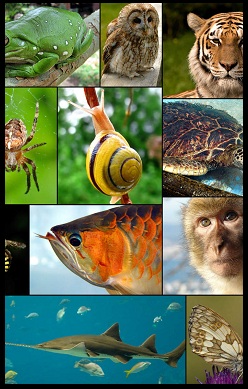
The origin of life on earth is still unknown till now, scientists have two opinions about the origin of life
1st opinion: Organic compounds from which life originated came to the earth from space
2nd opinion: Life originated on the earth, the first organisms to appear were bacteria, and the last to appear were humans
![]()
Special creation theory
It states that all different living organisms were created in their present forms and no changes occurred to them over time.
Spontaneous generation theory
It states that living organisms may be created spontaneously from non living matter, such as the erroneous belief that mice originated from dirty hay
The theory of universal origin of life
It states that life reached to the earth in the form of bacteria from celestial bodies (meteors, meteorites….etc). Which means that life began from space
The theory of earth origin of life (the most scientific theory)
It states that life originated from earth due to the chemical reactions between some substances which were common on earth (Methane, Hydrogen, Water, Ammonia, Carbon monoxide), these reactions were very slow and complex
In 1953, Scientists Urey and Miller succeeded in changing Methane (CH4), Hydrogen (H2), Ammonia (NH3), Water (H2O) and carbon monoxide (CO) into amino acids, the building units of proteins, with the help of high electric charges for long time periods. They received Nobel Prize for this
Evolution
Evolution: The gradual and slow change in the characteristics of living organisms over long time periods
The supporters of evolution theory see that the idea of biological evolution depends on the following points:-
1- Each kind of living organisms originated from more primitive and less structured organism which existed before it
2- Permanent changes occur to the shape, structures and functions of organisms
3- The changes occurring to living organisms are very small, but over centuries they accumulate causing big differences which result in the creation of different
Living organisms
4- The number of living organisms is variant, as all living organisms didn't appear at the same time. But they appeared gradually and evolved till they became in their present forms
Philosophers and the origin of life
Thales: Living organisms originated from water
Alexander: Living organisms originated from mixture of sun and water
Aristotle: He believed in the idea of the gradual change from the simple to the complex (from the incomplete to the complete)
![]()
1- Natural selection
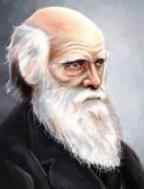
British scientist Charles Darwin (1809 – 1882) began
his historical trip around the world in 1831, which ended in
1836 (after five years). He noticed the differences between
the living organisms he found on some islands, especially
those on Galapagos Island.
Darwin noticed that birds have different shapes of beaks
due to the adaptation of every species with the kind of food
it eats and the evolution of beaks by natural selection
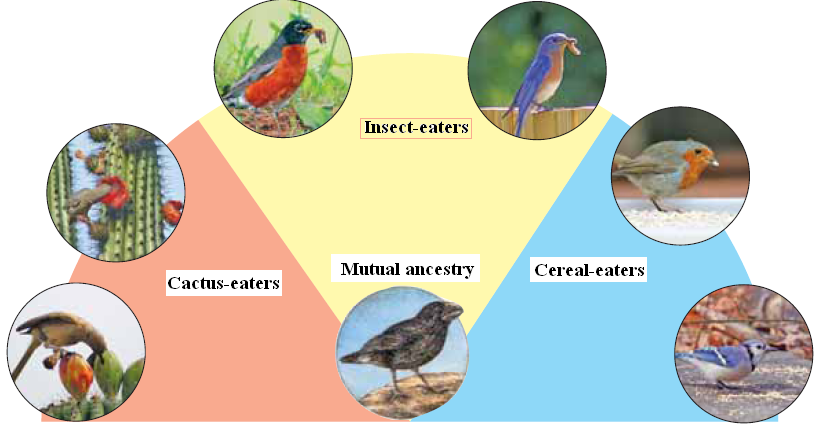
Fig. (1) Natural selection and beaks of birds, each kind has different shape
Kind of suitable food |
Beak shape |
Bird |
Meat |
Hooked |
Vulture |
Grass - vegetables |
Broad and flat |
Duck |
Seeds |
Short and pointed forward |
Pigeons |
Insects |
Long |
Cattle egret |
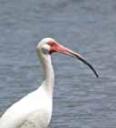
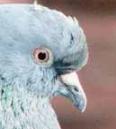
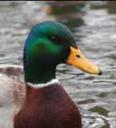
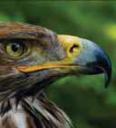
Fig. (2) Cattle egret Fig. (3) Pigeon Fig. (4) Duck Fig. (5) Vulture
Explanation of natural selection
Living organisms face extreme conditions which lead to their death. So, weak organisms which cannot face these conditions die. When weak organisms die, their characteristics cannot be inherited at all. On the other hand, strong organisms which could overcome the extreme conditions by their characteristics go on living and give these characteristics to their offspring. Over the time, strong characteristics accumulate forming new organisms.
Sexual selection works on increasing the occurrence of natural selection, where the stronger and more suitable males and females mate. So, good characteristics are inherited to the offspring. Weak characteristics disappear because living organisms do not tend to mate with weak individuals
Artificial selection
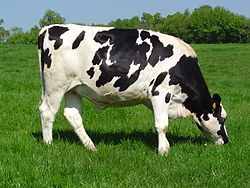 Darwin carried out an
experiment on pigeons,
Darwin carried out an
experiment on pigeons,
he concluded that we can increase or limit a certain
characteristic in living organisms. We can do so by
determining the mating couples
Darwin observed that artificial selection gives the
same results of natural election, but it needs more time
Fig. (6) Frisian cow race
Artificial selection caused the appearance of new animal races such as Frisian cow
A shepherd cross different races of animals in order to accumulate the good characteristics of different races together, which produces a new race causing the evolution of living organisms by artificial selection
Artificial selection is directed, while natural selection is directed by nothing but nature factors
Natural selection: Selecting organisms which are most adapted to environmental conditions due to the accumulation of inherited traits, which help them survive and go on living
2- Struggle between living organisms
Struggle between the individuals of the same or different species works on increasing the chances of natural selection occurrence
Struggle between living organisms for of food and shelter is called environmental selection, while the struggle for mating is called sexual selection
3- Mutation
Mutation: Sudden change in the hereditary material of a living organism which causes the change of hereditary trait
Most evolution scientists see that natural selection is not enough for the occurrence of evolution, sometimes mutations work on changing the hereditary traits, which causes the appearance of new traits.
Mutation may be positive or negative. Mutations cause the occurrence of genetic variation required for the occurrence of evolution
Mutations which occur to some kinds of microbes, which increase their resistance to antibiotics, is an example on mutations causing evolutionary change
Mutations cause the creation of new genetically modified organisms. Natural
Selection selects the best of these mutations and works on its survival and continuity and eliminates harmful mutations. In other words, natural selection 'sieves' living organisms which carry these mutations
4- Population genetics
Population is a group of living organisms of a certain species living in a certain place which inbreed randomly
The genes of a population individuals represent the genetic content of the population.
We can calculate the rate of genes distribution in the genetic content of the population by counting the number of phenotypes of a certain trait, and determining the kind of gene (recessive – dominant)
Scientists Hardy and Weinberg stated that there is a tendency for the rate of gene distribution to remain constant in a population from one generation to another. The same tendency applies to the phenotypes and genotypes of this genes. In other words, there is a tendency towards a state of genetic equilibrium in the population, that keeps its existence and keeps it genetic characteristics constant
Hardy- Weinberg law: The rate of gene distribution remains constant in a population from one generation to another and the same applies to the genotypes and phenotypes of this gene
Conditions that keep the genetic equilibrium in the population:-
1- The population must be large in size so that all genetic characteristics are represented
2- All the population individuals should be of the same species
3- Mating between individuals should be random, so that mating won't be in favour of a certain characteristic
4- Genetic characteristics should not be subjected to natural selection, which increases or decreases its spread in population according to the environment
5- Individuals of other populations should not migrate to the population and vice versa
6- Mutations should not occur
7- Parents of each species should produce equal number of offspring
If one of the previous conditions is not fulfilled, the genetic equilibrium will be disturbed and go in a new direction called genetic drift. Which leads to the evolution of population
Genetic drift: Evolution which occurs to the population due to the occurrence of disorder in one or more conditions of genetic equilibrium
5- Variation
Variation of genetic characteristics helps in the adaptation with different environmental conditions, and its continuity.
Causes of variation
1- Sexual reproduction: It occurs by genetically-different gametes
2- The abundance of genetic characteristics of the individuals of same species
3- Genes interaction: Which makes genes affect each other
4- The occurrence of crossing over during Meiotic cell division which works on the variation of gametes
5- The influence of different environmental conditions on the appearance of some genetic characteristics
6- The occurrence of chromosomal or genetic mutations
7- Adaptation
Adaptation: The compatibility of any structure inside an organism's body to its function
Living organisms have genetic characteristics which make able to be adapted to the environment they live in and helps in continuity and reproduction
Examples: Gills in fish – Wings in birds
8- Isolation and the creation of new living organisms species
Scientists see that the formation of new species of living organisms depends on isolating them from their group, and preventing them from mating with individuals of the population. Which is known as Reproductive Isolation
Reproductive isolation causes disorder in genetic equilibrium and the occurrence of genetic drift; which leads to the appearance of new species
Causes of reproductive isolation
Geographical isolation which occurs due to the existence of geographical barriers (Mountains, seas…etc), which prevents the mating of individuals of the same species
9- Extinction of small groups
Extinction: The gradual decrease of the individuals of a certain species, which leads to its disappearance
Causes of extinction
1- The struggle of species for limited resources , which is called competitive exclusion, which makes a certain species surpass another one causing the extinction of that weak species
2- The occurrence of climate changes which are harmful to living organisms, such as drought which causes the extinction of many plants. So, animals which feed on these plants becomes extinct or endangered
3- The struggle of new species with original species
4- The collision of celestial bodies with earth (it is one of the assumptions which explained the extinction of huge reptiles like dinosaurs 62 million years ago)
5- Human activities such as overcutting of trees, overhunting of animals, dehydration of water surfaces and environmental pollution
The effect of extinction of biological equilibrium
Extinction causes disorder in ecosystem, as the constancy of biological equilibrium of any ecosystem is linked to the diversity of the species living in it. When the number of species decreases, the equilibrium decreases and vice versa
![]()
Evolution: The gradual and slow change in the characteristics of living organisms over long time periods
Natural selection: Selecting organisms which are most adapted to environmental conditions due to the accumulation of inherited traits, which help them survive and go on living.
Mutation: Sudden change in the hereditary material which causes the change of hereditary trait
Hardy- Weinberg law: The rate of gene distribution remains constant in a population from one generation to another and the same is applied to the genotypes and phenotypes of this gene
Genetic drift: Evolution which occurs to the population due to the occurrence of disorder in one or more conditions of genetic equilibrium
Adaptation: The compatibility of any structure inside an organism's body to its function
Extinction: The gradual decrease of the individuals of a certain species, which leads to its disappearance
![]()
1- Urey and Miller experiment made scientists support the theory of earth origin of life
Because Urey and Miller could change ammonia, carbon monoxide, water and hydrogen into amino acids (the building units of proteins) with help of high electric charges. This experiment supported earth origin of life theory (which states that life originated from the reaction of substances on earth with each other over long time)
2- Birds have different beak shapes
Due to the adaptation of every species with the kind of food it eats, and the evolution of beaks by natural selection
3- Artificial selection is different from natural selection
Because artificial selection is directed, while natural selection is directed by nothing but nature factor
4- Sexual selection is different from environmental selection
Because sexual selection is the struggle of species for mating, while environmental selection is the struggle of species for food and shelter
5- Mutations play an important role in biological evolution
Because they cause changes in hereditary material, which causes the appearance of new hereditary traits and hence evolution
6- The type of antibiotics used for treatment should be changed every certain period of time
Because mutations occur to microbes which increases their resistance to antibiotics, so we should change the type of antibiotic so that the microbes could not resist it.
6- The occurrence of genetic drift
Due to the occurrence of disorder in one or more conditions of genetic equilibrium
7- The variation of living organisms
Due to:-
1- Sexual reproduction: It occurs by genetically-different gametes
2- The abundance of genetic characteristics of the individuals of same species
3- Genes interaction: Which makes genes affect each other
4- The occurrence of crossing over during Meiotic cell division which works on the variation of gametes
5- The influence of different environmental conditions on the appearance of some genetic characteristics
6- The occurrence of chromosomal or genetic mutations
8- The extinction of some living organisms
- The struggle of species for limited resources
2- The occurrence of climate changes which are harmful to living organisms
3- The struggle of new species with original species
4- The collision of celestial bodies with earth (it is one of the assumptions which explained the extinction of huge reptiles like dinosaurs 62 million years ago)
5- Human activities such as overcutting of trees, overhunting of animals, dehydration of water surfaces and environmental pollution
9- The sudden disappearance of dinosaurs
Because a celestial body hit the earth 62 million years ago, which lead to the change of climate conditions and hence the extinction of dinosaurs
10- Competitive exclusion is from the major causes of extinction
Because the struggle between species for survival makes a certain species surpass another one, causing the extinction of that weak species
![]()
1- The immigration of living organisms carrying certain characteristics to another population
This causes disorder in the genetic equilibrium of the population, which causes the occurrence of genetic drift and hence evolution
2- The occurrence of climate changes which are harmful to living organisms
This will cause the extinction of these organisms, or make them endangered
3- The occurrence of geographical isolation between the individuals of the same species
This will prevent individuals of the same species from mating. So, they tend to mate with other animals causing the formation of new organisms with different traits (evolution)
![]()
1- Choose the correct answer
1- The theory which states that life originated due to the occurrence of chemical reactions between some substances is
A- Special creation theory B- Spontaneous generation theory
C- The universal origin of life D- Earth origin of life
2- Urey and Miller changed hydrogen, water, methane and ammonia into……
A- Monosaccharides B- Disaccharides C- Amino acids D- Lipids
3- Microbe acquire the ability to resist antibiotics due to the occurrence of ……
A- Isolation B- Mutation C- Evolution D- Adaptation
4- Beaks of Galapagos birds evolved due to …..
A- Mutations B- sexual selection C- Environmental selection D- isolation
5- Which one of the following conditions aren’t from genetic equilibrium conditions?
A- Individuals of population should not migrate
B- Mating should be random
C- The occurrence of mutations
D- The size of population should be large
2- Write short notes about
1- Spontaneous generation theory
2- Mutation
3- Hardy- Weinberg law
3- Compare between
1- Universal origin of life and earth origin of life theories
2- Sexual and environmental selections
![]()
1- Choose the correct answer
1- Earth origin of life
2- Amino acids
3- Mutations
4- Natural selection
5- The occurrence of mutations
2- Write short notes about
1- This theory states that living organisms may be created spontaneously from non living matter, such as the erroneous belief that mice originated from dirty hay
2- Mutation is the sudden change in the hereditary material which causes the change of hereditary traits of living organisms. It sometimes causes evolution
3- This law states that rate of gene distribution remains constant in a population from one generation to another and the same is applied to the genotypes and phenotypes of this gene.
3- Compare between
-
Earth origin of life theory
Universal origin of life theory
Life originated from earth due to vey slow and complex chemical reactions between some substances which were common on earth
- Life reached to the earth in the form of bacteria from celestial bodies (meteors, meteorites….etc). Which means that life began from space
Environmental election |
Sexual selection |
- It is the struggle of living organisms for mating |
- It is the struggle of living organisms for food and shelter |
